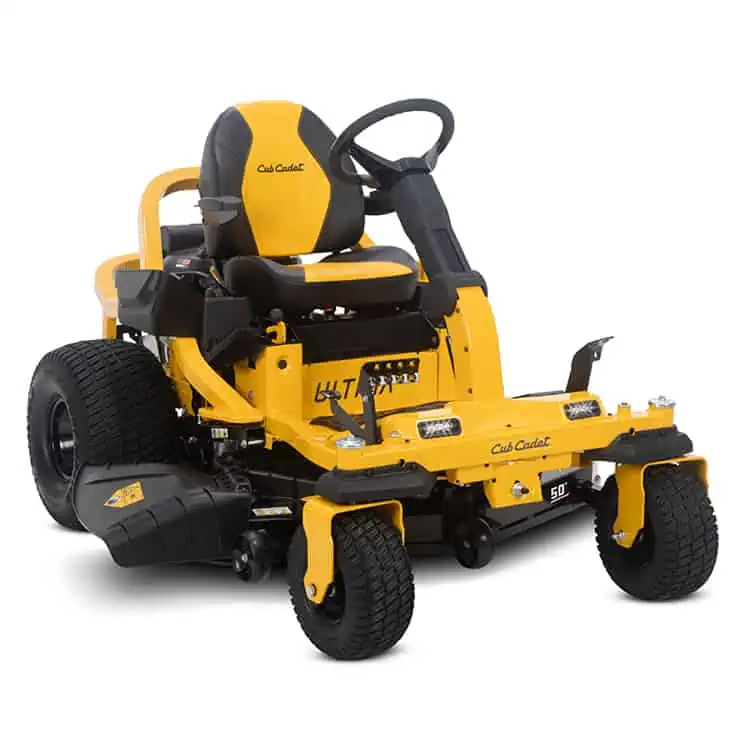If you have a yard full of lawns, chances are that you have a lawnmower to go over it. Whether you mow short or long and at preferred intervals, tire depressions and ruts are unsightly spots you want to avoid dealing with. Some reasons include damage to your lawn and other hazards, especially around your yard.
There are several ways to deal with them, but sometimes, you can’t help but wonder, “Will the tire ruts go away?” This article will answer this question and help you figure out the best solutions to deal with tire ruts in your lawn.
How Tire Ruts Form on Your Lawn
Watering your lawn is a great idea; heavy rain can provide respite for your grass. However, the water will eventually pool along lines formed by your lawnmower’s tires. These marks can build up, giving your grass a hard time growing.
The ruts hardly drain away, and you’re left with suppressed grass looking for a way to grow. Further, tire ruts can last for months with no end in sight.
Will Tire Ruts in Lawn go away?
Yes, but it takes some work to make them go away. When you drive on your lawn, the tire imprints on your grass. The weight of the vehicle pushes down on your lawn. These marks, if left unfixed, can become almost indelible on your lawn.
You can do something about the tire marks when you loosen the soil by pulling up with a pitchfork. Once you’ve done this, do some watering over the affected areas.

Steps to Fix Tire Ruts in Your Lawn
Before attempting to fix ruts, you must understand the extent of the problem. To help you do that, the ruts are classified into two different categories:
- Shallow ruts that are less than 4 inches into the soil.
- Deeper ruts more than 4 inches deep into the ground.
Shallow Ruts
Shallow ruts are easy to repair when you know the correct steps. Use the following steps to get it done:
- Use a spading fork to loosen the compacted layer of soil carefully. Since the area is shallow, there’s no need to dive too deep with your fork here.
- Next, locate the edge of the rut with your fork, then place it at a 45-degree angle. Push the fork a little into the soil, then push down on the handle.
- The earth and sod will go up when you use the fork to pry it up. Keep doing so until it’s around an inch above the level of the rest of your lawn. Don’t worry; the sod will settle into the correct level of your lawn.

Deep Ruts
Either you’ve had a heavy vehicle over your lawn, or other tires have consistently followed one path. If the lawn is wet during such times, there will be issues fixing deeper ruts. However, all is not lost.
Follow these steps to get it right and restore your lawn’s appearance:
- Firstly, you should loosen the compacted ground to have an easy run of the process. Use a fork for this process by placing it at a 45-degree angle along the edge of the rut. But this time, push the fork into the ground to loosen the compacted soil.
- Next, retrieve whatever grass you can and take it out of the way to easily target the rut. This can be achieved by taking an edger or landscaping knife and cutting down one wide and either end of the rut. However, make sure you cut through the thatch into the soil, use your fork to lift the grass, and then fold it over onto the lawn to fill it.
- With the grass out of the way, loosen the soil on the rut a little more to give the new grass the best chance of taking root and flourishing.
- Grab the topsoil and some sand or compost to make a 50/50 mixture. One reason to do this is so the area will drain well and be more resistant to compacting.
- Now, fill the rut with the mixture from the above step, ensuring you do not leave any gaps untouched. Then fold the grass back onto the freshly laid soil bed before pressing it down firmly to keep the grass roots in contact with the ground underneath. After that, the grass should sit higher than the surrounding lawn, but with time, it will get leveled with the rest.
- In some situations, you may also have to weed the area. If that’s the case, ensure you use the same variety of grass seeds. Make sure you carefully go over the area with a rake to ensure the seed is spread evenly. At this point, the most important thing to do is to water the area regularly to give the grass the best chance of taking root and thriving.
You must take these steps to eliminate a deep tire rut in your lawn. Still, it would help if you observed the area for a while so it doesn’t sink below the rest of the lawn. If that happens, you’ll need to review the earlier steps again. Conversely, you can open the sod and add more soil moisture.
Lawn Tire Marks Prevention Tips
You can stop ruts from taking over your lawn from the onset. All you have to do is follow these tips below:
- Do not mow a wet lawn, as this is one of the major ways to create a deep, difficult-to-remove rut. The weight of the tires will open a sink in the ground, so it’s best to wait until the soil is dry.
- Use different methods to take care of your lawn. You can alternate your mowing patterns on other days. Doing this will help you recover in between cuts. That’s because a continued pattern will compact your soil on each mow, creating less time for recovery.
- Use a mower with tires that pack some aggressive tread. Whether you’re mowing slowly or with some speed, the tires should offer extra traction across the ground. That way, there’s no need to worry about ruts and other marks.
Conclusion
Sometimes, how much care and attention their owners provide separates a great lawn from a dour-looking one. One thing that makes a lawn bad is tire ruts from heavy vehicles and other machines.
These ruts could kill your grass and leave your lawn with multiple bad patches. However, the ruts can go away after you have put in some work to deal with them.
Take care of the topsoil by filling the hole with sod and, in some cases, new seeds of the same species. Now that you know this, you can follow the steps to deal with ruts and stop them from occurring. That includes switching up your mowing methods and not mowing wet grasses.






